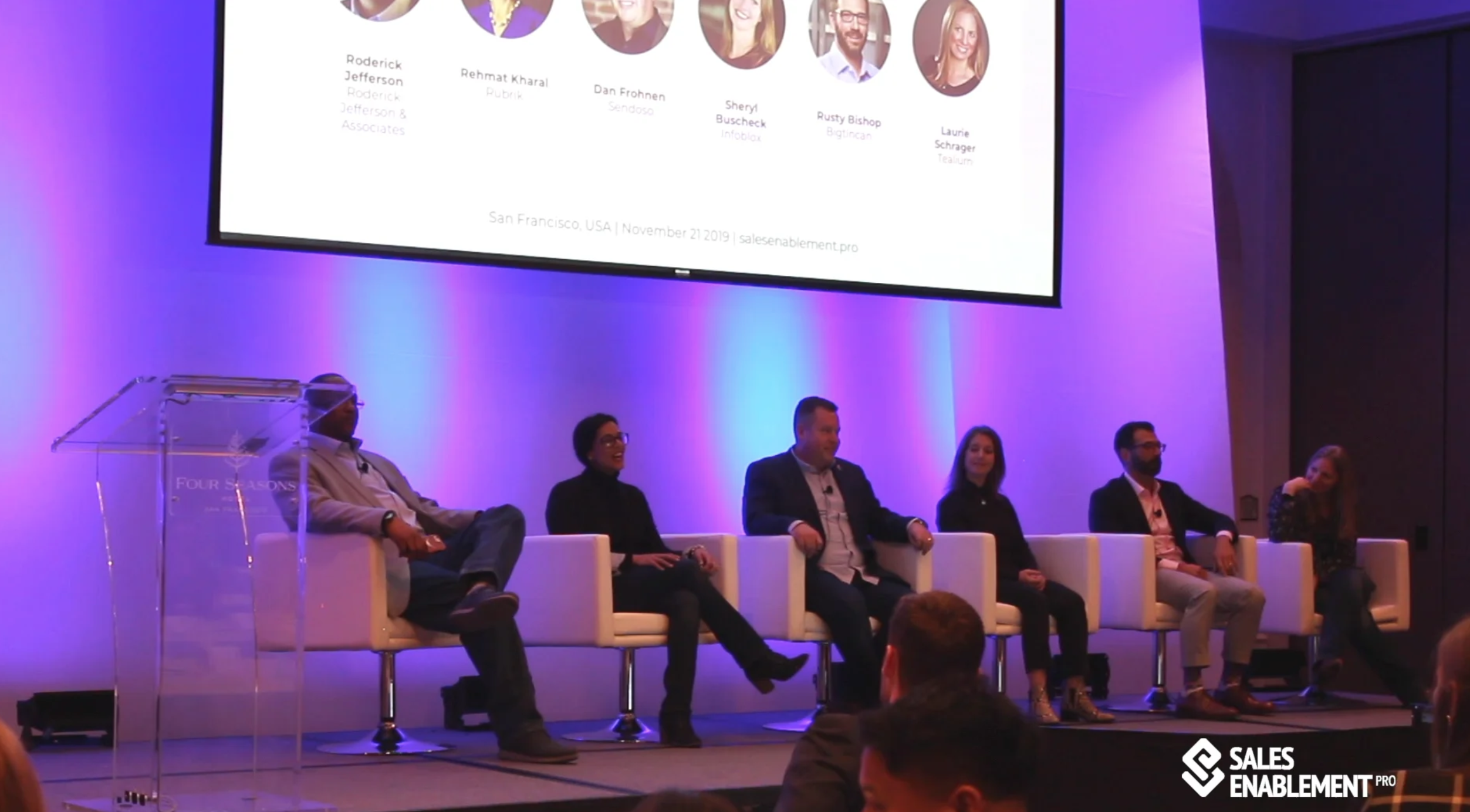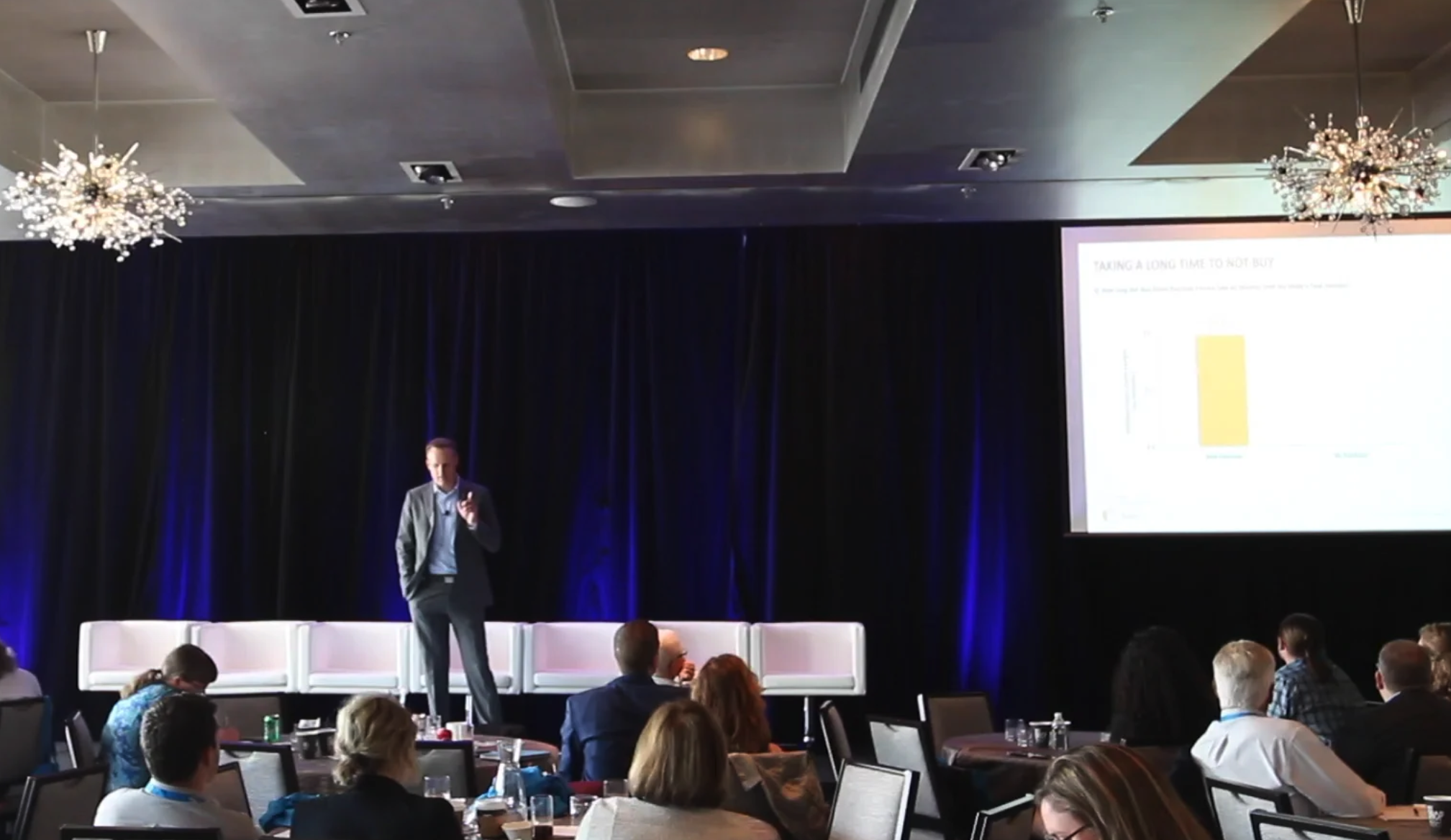Shawnna Sumaoang: Hi, and welcome to the Sales Enablement PRO podcast. I am Shawnna Sumaoang. Sales enablement is a constantly evolving space, and we’re here to help professionals stay up to date on the latest trends and best practices so they can be more effective in their jobs.
Today, I’m excited to have Nieka Mamczak with us. Nieka, I’d love for you to just introduce yourself, your title, and your organization.
Nieka Mamczak: Hi, thank you for having me. I’m Nieka, and I am the sales enablement and productivity manager at Udemy.
SS: Excellent. And you focus on enabling many types of customer facing roles there, including ADR, sales managers, and customer success. So, in your opinion, why is role-specific sales enablement important?
NM: Yeah, so great question. I think there’s two things that come to mind right away as it relates to that. So, first and foremost, if each role contributes something unique to both the sales funnel and the customer journey. In order to ensure that that life cycle of the lead and the sales stages for opportunities are managed thoroughly, it’s best to highlight in role-based training the importance of each step and how each role brings or can bring their creativity and relationship building to both of those journeys.
In addition to that, everyone comes with a different background and experience. Especially for top of the sales funnel, ADRs and SDRs, they are most likely just getting started in their career. So, the way you work with those types of roles is way different than when you work with people who have been in a role for a while.
Also, both presales and post-sales enablement is very important. How the customer first begins their journey with both the SDRs and ADRs, so you want to work on very specific strategies there in establishing trust in relationship building. Of course, when it comes to the actual selling to the customer, you want to make sure that AEs are equipped with enough strategies and best practices to be hungry salespeople and to be metrics-driven and to be results oriented. And then on the flip side, once a customer becomes a customer, of course you want to make sure that your customer success team is equipped with enough relationship building as well as growth and scalable strategies.
SS: So, you touched on this a little bit already, but how did the enablement programs you build differ for each of these roles? For example, how does your approach to sales enablement differ between pre and post sales team?
NM: First, I’d would like to say that I do prefer a high-level enablement approach for all roles, just so everyone’s aware of what everyone else is doing. But then it’s also very important to drill down into each role and responsibility so that, not only do you understand the full customer journey or the full sales funnel stage, but you also really appreciate and get to know and establish best practices for what you are going to be doing with the customer.
So, for example, I run enablement office hours here at Udemy. Each Friday I conduct an office hours session, and the first Friday of every month is focused on our enterprise sales team. The second Friday is focused on our commercial or SMB sales team. The third Friday is focused on sales development, so SDRs and ADRs. And then the fourth Friday is focused on post-sale or customer success. So, providing a format and a calendar of events is also very helpful. That’s in addition to high-level overview enablement programs that everyone participates in. But then having that process, or if in fact, you can put together a calendar of events that everyone can rely on and look forward to, that really helps in making sure that you have a consistent working relationship with each role.
SS: Absolutely. So, I want to shift gears a little bit because you recently participated in the sales enablement’s where I on a panel about sales plays. I want to understand from you, how do you tailor your sales plays for these different roles that you enable?
NM: I like to deliver the sales plays to the entire team at first to make sure, again, that everyone has visibility and awareness of what the play is and how it affects the life cycle of the lead, the opportunity stages as well as the customer journey with us. Then what I do is drill down and using my office hours on a weekly basis, I’m able to take the play and drill down into each person’s role.
It’s the same thing if you ever played sports. I played soccer and I was left-wing, so I knew what my position was, although I knew what everyone else’s position was on the field. And when working with my coach, my coach specifically worked with me on not only the strategy of working with 10 other people on the field, but also more specifically how I could just be out literally in left-wing, just waiting for a team member to know I was there. So, that was our play. That was our process or strategy, and figuring out how can I get to the goal and score? So, it’s the same idea, right?
You want to make sure that each player or each member of the team knows what their job or responsibility is in getting to the end result, which in soccer could be a goal, in sales, of course, is a deal closed. But making sure that everyone knows what they’re supposed to be doing, their role, and really focusing on the best practices and the strategies that each role can adopt.
And just repetition, I can’t stress enough, is very key. So, you don’t want a sales play to be completely different from any other strategy. In fact, your sales plays should have some continuity or evolution to them. And again, if you’re in that same role, it should feel confident, comfortable. It’s not like you’re playing left wing in soccer one day and one sales play and then a forward on the basketball court in the next sales play.
SS: Right. Yeah. I love that analogy, by the way.
NM: Oh, good. It’s fun to think about it. It’s kind of relatable.
SS: Absolutely. In that panel though, you also talked about the importance of cross-functional alignment, specifically when developing sales plays. So, why is that important and who are some of the core partners that need to be involved?
NM: Definitely marketing, first and foremost, because typically most companies rely on the marketing team to create the collateral that’s going to be shared with the customer. And so if the customer’s first impression or first relationship is built with you by going on your website and downloading a white paper, or just reading some core messaging on your website, you want to make sure that you’re sticking to the vision and the message and what we call here at Udemy, our narrative, to make sure that when salespeople are speaking to the customer, you’re not talking about something totally different.
So, imagine going shopping on a website and you want to buy coffee to be delivered because you really like to drink coffee. And they talk about all the different flavors, and then you call and you want to place an order and the salesperson is trying to sell you milk. You’re like, “Whoa. I would like the coffee first.” So, what went wrong here? I know it’s a silly little analogy, but you get the point. The marketing team is the first line of messaging and you want to make sure you are connected to marketing to know what they are presenting to customers, because we are an extension of that as sales, right? So, marketing is key.
Second is product. The product team is working behind the scenes and they’re assembling the product with the capabilities and features. And imagine if they built something really innovative and creative that was just mind blowing and it’s just like nothing ever before.
And all of a sudden, you’re speaking to a customer and you had no idea this great feature existed and the customer decides, “no, I don’t really want to buy from you right now because you’re missing this.” Now, if you had talked to product and you knew that they had that feature or that capability, you could say, “Oh wow, I’m so excited to tell you. I actually have something that you need.” So, aligning with product is key, of course, because they are the people creating what you are selling. It would be kind of silly on your part if you didn’t bring to the forefront the awareness of what they’re building.
Operations is also key. So, operations can partner with enablement and help you execute on sales plays as it relates to creating metrics and measurable reports so that you can showcase and highlight what you’ve worked on. A sales play is a product of your own business of enablement that you should be proud of. That you want a lot of involvement with. You want a team around you to help support you, but in the end, you want to actually show how awesome it was. Operations can help you show how amazing your sales play is by bringing together the reports in the different solutions, like CRMs, for example, to showcase how great the sales play was, how effective it was.
And of course, the final is leadership. I can’t stress enough how important it is to get executive sponsorship and support just from the beginning of time, all the way through the executive team. The leadership team is going to be your ally in delivering your messaging, your sales plays to the rest of the roles and the rest of the team, and they’re are going to be the ones to help bring awareness and visibility and participation the best.
SS: Absolutely. I think you touched on it those last two, but I’d love to ask this question outright. How do you drive adoption and ensure that sales plays are effective?
NM: When I was speaking on the panel at the Soirée, literally 10 minutes before the panel started, I was trying to think of a creative phrase that people would remember me by. And so it dawned on me. There is a movie called “Field of Dreams.” It’s somewhat old at this point, but I do like the one quote in the movie that says, “if you build it, they will come”. What I think the most important thing is, is you want to build it. What is it? It’s the sales play strategy that you want to have. And it’s got to be down to the template or the format, the process of delivery and the continuing support around the cross-functional teams that you have the whole entire process of building out the sales play. Once you build out that process, people will naturally and organically come to covet those sales plays and follow you.
So, if you have an inconsistent sales play process, and each one is different, going back to the analogy of, “Oh, you’re playing soccer today, but tomorrow we’re going to play basketball.” If you establish that consistency, that’s going to be key. Establish that sales plays are not just a one-time thing. It’s not a flavor of the month. It’s a continuous, we’re going to do this a lot and this is how we’re going to learn together. If you can establish that process and format that’s reliable and scalable, then from what I’ve observed, the adoption is organic. In fact, you actually want to build something that your sales team and your customer success team and everyone around you is excited for. And they’re like, “Ooh, what are you building next? Because I can’t wait to participate.”
SS: I love that. All right. And I don’t mean to lead the witness too much, but with the last question, and again, you kind of mentioned this a little bit earlier, how these should all kind of ladder up to larger corporate initiatives. But what are some of the key metrics practitioners should use to measure the impact of sales plays?
NM: Yes. This is something that I’m very passionate about. Just being a salesperson first, and then sales leadership, capacity metrics are key. And in the end, you want everyone to feel good about accomplishments. And the way we do that with sales the most is of course through numbers. So, first and foremost, you want to measure, are your sales plays being used? You want to establish, again, the scalable, reliable process and protocol and format to make sure that the plays can be not only, presented to each different role, but also adopted and then also used. So that’s a key metric.
Another one is, are the sales plays making a revenue impact? So, sales plays are not just warm and fuzzy, nice ideas. They are actually meant to drive results. You want to make sure that you’re establishing a sales play metric protocol that shows results, and it doesn’t necessarily mean your sales plays have to result in, “Oh, the deal is closing because of this play”, but is this play influencing a customer conversation? Or is this play influencing a pipeline number, or is this play influencing a growth target or an expansion target? So, making sure that revenue is impacted is also very key.
I think another metric that maybe is not as tangible to measure, but certainly something that you should be aware of is driving best practices. In addition to sales practitioners using methodologies, sales plays are another way that you can bring your team or your group together, all the different roles or positions or players together and establish the best practices that you are going to work with together.
Then finally, I like to say, are your sales plays making noise? One of the greatest conversations that I was just part of not too long ago is I had created a sales play here at Udemy for us targeting our customers in a very specific way. We had an enablement session and I delivered the sales play. And then literally two hours later, I had someone Slacking us, at the sales team saying, “Hey, I just utilized this sales play and it worked. I have an opportunity now, and I’m putting it in the pipeline.” And then you hear the visible cheers and you see the congratulations. I know it sounds exorbitant, but it’s those little wins that are the noise along the way that you want to make sure that you’re hearing, because the last thing you want to do is create this beautiful sales play that you’re so proud of, and then there’s crickets, so you want to make noise.
SS: I love that. Nieka, thank you so much for joining us and talking to us today.
NM: You’re very welcome.
SS: To our audience, thank you for listening. For more insights, tips, and expertise from sales enablement leaders, visit salesenablement.pro. If there’s something you’d like to share or a topic you’d like to learn more about, please let us know. We’d love to hear from you.







